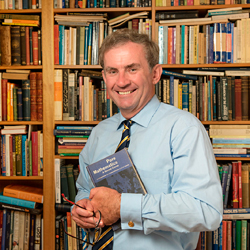IB Physics Relativity
/A common examination response is that a rapidly moving object is observed to be contracted in length as it passes an observer. Is this correct? No. The observed overall length of a far away object is the same and it is seen to be rotated with the back of the object visible to the observer and is seen as red shifted. The below extract from Electromagnetic Fields and Waves by Lorrain, Corson and Lorrain (3rd edition, 1988) p254 summarises this.
"Suppose one looked through a telescope at a far-away cube moving at a velocity v≅c perpendicular to the line of sight. Then the face normal to the line of sight would appear to be foreshortened in the direction of motion by the factor 1/ɣ. Also one would see the trailing face for the following reason. At a given instant, the eye senses the photons that arrive at that instant. Photons originating from distant parts of the object have left earlier than others and the object has moved in the meantime. The net effect is that the cube would appear to be rotated through an angle arctan(v/c). If the cube were not far away, then it would appear distorted in peculiar ways, depending on its distance and velocity. This effect, which never has been observed, was discovered by James Terrell in 1959, 54 years after the publication of Einstein's first paper on relativity."
